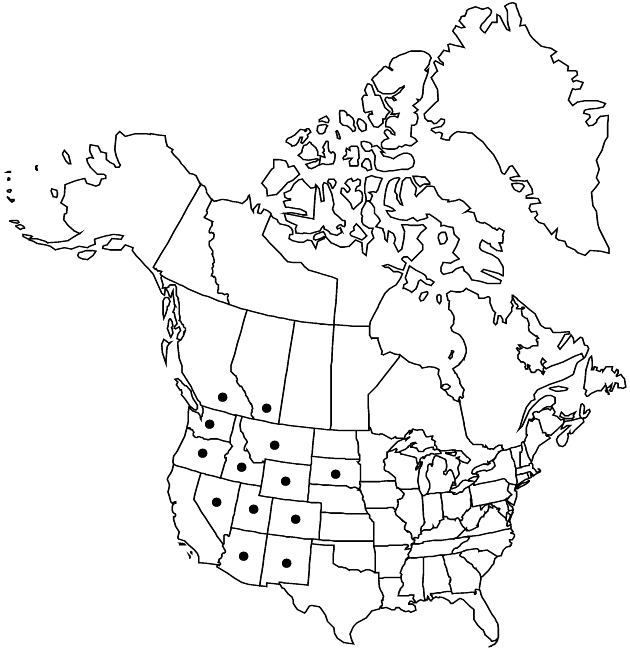Erigeron speciosus
in A. P. de Candolle and A. L. P. P. de Candolle, Prodr. 5: 284. 1836.
Perennials, 30–80(–100) cm; rhizomatous, fibrous-rooted, caudices relatively thick. Stems erect, glabrous or sparsely hirsuto-pilose (hairs 0.5–1 mm), often minutely glandular distally. Leaves basal (usually withering by flowering) and cauline; basal blades oblanceolate-spatulate, 30–80(–150) × 4–18(–28) mm, margins entire, often ciliate (main veins sometimes also), faces glabrous, eglandular or distal sparsely minutely glandular; cauline blades ovate to ovate-lanceolate, oblong-lanceolate, or lanceolate, nearly even-sized distally or sometimes mid largest (continuing to immediately below heads, bases usually clasping to subclasping). Heads (2–)4–20 in corymbiform arrays. Involucres 6–9 × 11–22 mm. Phyllaries in 2–3(–4) series, usually glabrous, sometimes sparsely hirsuto-pilose, minutely glandular. Ray florets 75–150; corollas blue to lavender, rarely whitish, 8–16 mm (mostly 1 mm wide), laminae slightly coiling at least at tips. Disc corollas 4–5 mm. Cypselae 1.5–1.8 mm, 2(–4)-nerved, faces sparsely strigose; pappi: outer of setae, inner of 20–30 bristles.
Phenology: Flowering Jul–Oct.
Habitat: Dry or moist, gravelly or loamy soil, prairies, yellow pine, pine-fir, spruce-fir, aspen-spruce
Elevation: (600–)900–3400 m
Distribution

Alta., B.C., Ariz., Colo., Idaho, Mont., Nev., N.Mex., Oreg., S.Dak., Utah, Wash., Wyo., Mexico (Baja California).
Discussion
The population in Baja California is disjunct from the closest range in Arizona and northern Nevada.
Plants glabrous and glandular on the phyllaries, stems, and leaves have been recognized as var. macranthus; they intergrade with hairier forms and do not show a coherent geographic pattern. Plants commonly identified as Erigeron subtrinervis var. conspicuus usually have stems sparsely hirsuto-pilose with hairs 1–1.5 mm, and the leaves commonly are ciliate on the margins and veins. As implied in the nomenclatural combination by Breitung, those plants are more similar to E. speciosus than to E. subtrinervis, and they apparently show part of the greater variability of E. speciosus in the northwestern part of its range (Alberta, British Columbia, Idaho, Montana, Oregon, Washington, and Wyoming), where more typical plants also occur. Erigeron speciosus and E. subtrinervis are sympatric over large parts of their ranges and appear to be at least partially reproductively isolated entities, although intermediates are frequently encountered.
Selected References
None.